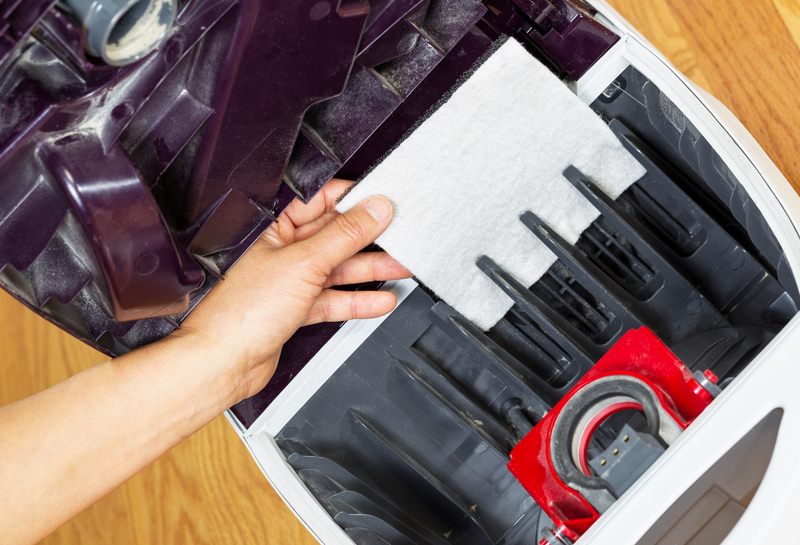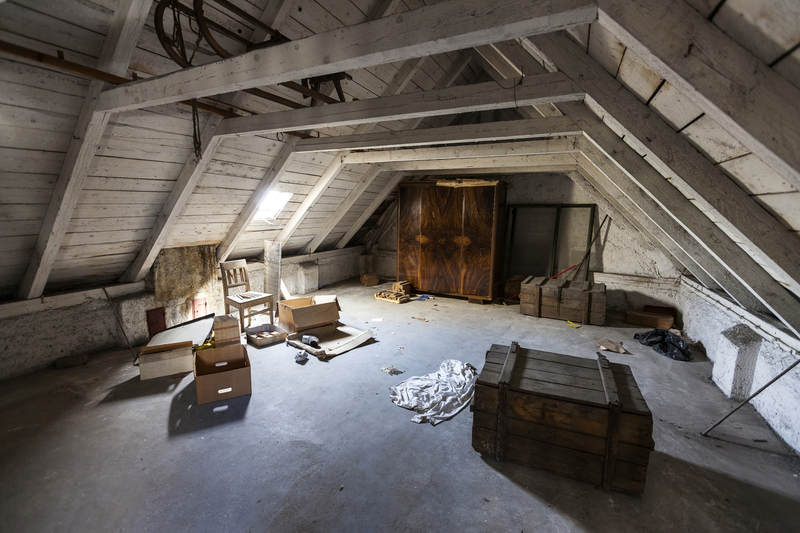DIY Guide to Eliminating Mould on Window Sills
Posted on 28/06/2025
DIY Guide to Eliminating Mould on Window Sills
Mould on window sills is a common issue that homeowners face, especially in damp or humid climates. Left unchecked, it can not only be unsightly but also pose significant health risks, including allergies and respiratory issues. This comprehensive guide will walk you through effective, step-by-step methods to eliminate mould growth, share essential prevention tips, and highlight the tools you'll need for the job. Whether you want to learn about removing mould from window sills or preventing it before it starts, this article covers everything you need.
Why Does Mould Grow on Window Sills?
Mould thrives in moist environments. Windows, especially those in bathrooms, kitchens, or poorly ventilated rooms, can trap moisture and condensation. This dampness creates the perfect breeding ground for mildew and mould spores to settle and proliferate.
- Humidity: High moisture content in the air encourages mould growth.
- Poor ventilation: Inadequate airflow allows moisture to linger on surfaces.
- Condensation: Differences in temperature inside and outside the home can cause water to form on windowsills.

Health Risks of Mould on Window Sills
Exposure to mould can cause various health effects, particularly for individuals with allergies, asthma, or weakened immune systems. Typical symptoms include:
- Wheezing or coughing
- Skin irritation
- Red or itchy eyes
- Shortness of breath
It is essential to address mould issues promptly to maintain a healthy home environment.
Essential Tools & Materials for DIY Mould Removal
Before you start the process of cleaning your window sills, gather the following supplies. Having everything on hand will speed up the job and ensure thorough results.
- Protective gear: gloves, mask, goggles
- Spray bottle
- White vinegar or hydrogen peroxide (never mix them)
- Baking soda
- Mild detergent or soap
- Scrubbing brush or old toothbrush
- Clean, lint-free cloths
- Paper towels
- Bucket of warm water
- Vacuum cleaner with HEPA filter (optional)
Important: Always use protective equipment as mould spores can be hazardous to your health.
Step-by-Step DIY Guide to Removing Mould from Window Sills
Step 1: Ensure Proper Ventilation
Open the window and, if possible, use a fan to divert airflow outside. This prevents mould spores from spreading throughout your home.
Step 2: Apply Protective Measures
Wear your gloves, mask, and goggles to guard against direct contact with mould and airborne spores.
Step 3: Remove Surface Dirt and Dust
Use a vacuum cleaner equipped with a HEPA filter to collect loose mould and dust. This minimizes the potential spread of spores. If you don't have a vacuum, use paper towels to gently wipe the surface.
Step 4: Apply Your Cleaning Solution
You have several options for cleaning agents that are effective against mould on window sills:
- White vinegar: Pour undiluted vinegar into a spray bottle and liberally spray the affected area. Let it sit for at least one hour.
- Hydrogen peroxide: Spray a 3% hydrogen peroxide solution onto the mouldy section. Allow it to stand for 10-15 minutes.
- Baking soda: Mix one teaspoon of baking soda with two cups of water. Spritz and let sit for a few minutes.
- Mild detergent: For stubborn stains, mix warm water with a few drops of dish soap and scrub the sill.
Note: Never mix vinegar and hydrogen peroxide, as combining them can release harmful gases.
Step 5: Scrub Away the Mould
Using a brush or an old toothbrush, scrub the mouldy surface gently to avoid damaging the finish of your window sill. For deeper grooves or corners, a cotton swab or smaller brush may be more effective.
Step 6: Rinse & Dry Thoroughly
Wipe down the area with a clean, damp cloth to remove any cleaning residue. Immediately dry the window sill with a separate, dry cloth or paper towel. Ensuring the surface is dry is vital to discourage further mould growth.
Step 7: Repeat if Necessary
Sometimes, stubborn mould may require a second round of treatment. If traces remain, repeat the cleaning process or allow the solution to sit for longer before scrubbing again.
Effective Home Remedies for Mould Removal
Apart from commercial mould removers, there are several natural, budget-friendly solutions for window sill mould removal:
- Tea tree oil: Mix one teaspoon of tea tree oil with one cup of water in a spray bottle. Spray, wait for an hour, and then wipe clean. Its natural antifungal properties are very effective.
- Borax: Dissolve one cup of borax in one gallon of water. Use a sponge or cloth to wash the window sill and let it air dry. Borax prevents future mould growth too!
- Lemon juice: The acidity of lemon juice acts as a natural bleach, helping lighten stains and kill some mould.
How to Prevent Mould on Window Sills in the Future
Prevention is always better than cure! Keeping your window sills mould-free will save you time and protect your home's air quality. Here are some top tips for preventing window sill mould:
- Control humidity: Use dehumidifiers, especially in damp areas of your house. Aim for a humidity level below 60%.
- Improve ventilation: Open windows regularly and use exhaust fans in areas prone to water vapour, such as kitchens and bathrooms.
- Check for window leaks: Cracked window frames or poor seals can lead to moisture intrusion. Promptly repair any leaks to prevent mould recurrence.
- Wipe condensation: During cold seasons, wipe down window sills and panes every morning to remove moisture.
- Regular cleaning routine: Clean windowsills with a mild cleaning solution every few weeks to keep mould at bay.
Implementing these steps will dramatically decrease your risk of mould problems in the future!
Should You Replace a Mouldy Window Sill?
In extreme or long-neglected cases, mould can cause irreparable damage to wooden or painted window sills. Signs that a window sill replacement might be necessary include:
- Visible rot or crumbling material
- Persistent musty odours even after cleaning
- Peeling or bubbling paint
- Repeated mould regrowth in the same spot
For severe or toxic mould (such as black mould), always consult a professional remediation service.
Expert Tips for Keeping Windows Mould-Free
- Install double glazing: These windows reduce condensation, discouraging mould development.
- Regular inspections: Make it a habit to check window sills and frames for early signs of moisture or mould.
- Seal gaps: Apply silicone or caulk to any gaps in window frames to block moisture access.
- Choose mould-resistant paint: When repainting window sills, pick a paint designed to repel mould and mildew.

FAQs About Eliminating Mould on Window Sills
How often should I clean my window sills to prevent mould?
It's ideal to incorporate window sill cleaning into your bi-weekly or monthly cleaning schedule, especially in humid rooms. During seasons of heavy rainfall or humidity, increase the frequency.
Is bleach safe for cleaning mould on window sills?
While bleach is a powerful disinfectant, it may not penetrate porous surfaces like wood. It is better suited for non-porous, sealed surfaces. For wooden window sills, stick to vinegar, hydrogen peroxide, or borax-based solutions.
What's the difference between mould and mildew on my windows?
Mildew usually looks powdery and gray, while mould is fuzzier, darker, and grows in patches. Both thrive in similar environments and should be dealt with immediately.
Can I eliminate window mould permanently?
With diligent cleaning and by addressing the root causes--such as moisture and poor ventilation--you can enjoy a long-term mould-free window. Regular prevention techniques are key.
Conclusion: Maintain a Healthier Home By Keeping Window Sills Free of Mould
Dealing with mould on window sills can seem daunting, but armed with the right tools, solutions, and a little know-how, you can easily tackle this household nuisance. Regular maintenance, moisture control, and prompt cleaning will keep your windows clean and your living environment healthier. Adopt these DIY strategies today to prevent and eliminate mould for good--and enjoy clearer, fresher views through your spotless windows!
If you found this DIY guide to eliminating mould on window sills helpful, share it with fellow homeowners or bookmark it for quick reference whenever you need. For persistent or hazardous mould infestations, do not hesitate to contact certified professionals.



